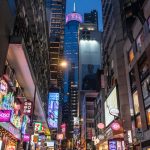
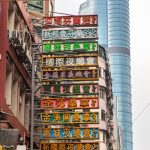
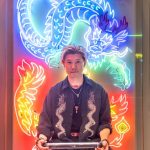
The Chinese defeat in the opium wars of the 19th century caused Hong Kong Island, the Kowloon Peninsula, the New Territories and the Outer Islands to become a British colony. A condition that it adopted until the night of June 30, 1997. From that day on, Hong Kong began a transition in which it will be integrated into China again in 2047. Until then, Hong Kong is an area of Chinese sovereignty called the Special Administrative Region. in which Hong Kongers live wondering about the future. About what the relationship with the Asian giant will be like. Your anxiety is justified.
Since then, freedoms and rights have been curtailed, cutting off the press from reporting and people from demonstrating against what they consider unfair. Added to the political and social dismantling is that of culture and memory. Government regulations and the unification of regulations since 2010 regarding environmental laws, light pollution, dimensions and safety measures, have been extinguishing one of the local emblems: neon signs.
The neons were concentrated in the Hong Kong of the collective imagination, which is small, like a film set. In the bulk of the territory where the apartment towers rise in which Hong Kongers live like beehives, there have never been neon signs. Neither in the border area with China, the New Territories, nor on the densely populated island of Ap Lei Chau, to name a couple of places as an example. The few who have not shaved off the facades of the buildings are rare birds pardoned. They shine with wrinkles, some looking better than others. The same fate has befallen the companies and people who manufacture and repair them. Without just neon lights, an industry and knowledge are becoming extinct. There are few neon masters left, those called Cantonese (Chinese dialect spoken in Hong Kong) yes it wasas are the octogenarian Mr. Wong and Wu Chi Kai, less than 60 years old. Guys reputed in their trade who don’t like to share their knowledge with strangers.
But in the face of the dwindling number of teachers, the number of artists who study, work and create with neon and other noble gases is growing. Two of them are Hong Konger Karen Chan (36 years old), better known as Chankalun (his project is The Neon Girl), and fellow Hong Konger Jive Lau (41 years old), founder in 2020 of Kowloneon, a studio where he creates and teaches the art of bending neon glass tubes.
Both, in addition to exploring the possibilities of glass and gas as modern art, teach others their knowledge and skills. A way to preserve and extend neon culture. They are both defenders of neon art. A light source that has suffered with the appearance of another that is cheaper, more energy efficient and easier to maintain: the LED. A metaphor that serves to explain the fate of Hong Kong and part of the rest of the world. Imagine movies like The day of the beast, blade runner or any by local director Wong Kar-wai in which instead of the neon signs that appear as a backdrop, there were LED lights.
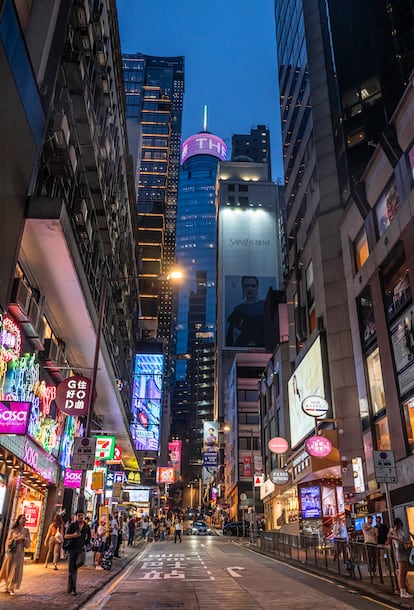
Since the 1950s, Hong Kong’s neon signs have been very useful visual references for people’s orientation and travel tools. marketing for the businesses that sported them and, indirectly, for those who manufactured them. At the same time that skyscrapers were rising in Hong Kong, turning it into a global financial center, neon signs were hung from the facades of residential buildings to advertise pawn shops, bakeries, saunas, restaurants, tea houses, cafes, hotels, etc. hours or love, Chinese medicine shops and salons mahjonga popular board game of Chinese origin. Signs that made the nights fluorescent and electric. But how is that possible? Neon lights are a sealed glass tube in which there is a small amount of gas and air. When connected to a high-voltage power source, the lamp turns on and the atoms of neon or the noble gas it contains begin to move. The color of the light depends on the gas that goes inside the sealed glass tube: red is for neon, yellow for helium, white for carbon dioxide, and blue for mercury.
The increasingly less colorful neons, of different sizes and shapes (squares, rectangulars, bats, leaves, palm trees, shrimps, sunglasses, Chinese characters…), that remain can be seen mainly on Nathan Road, Portland and Shanghai Street, Kowloon Peninsula, and Lockhart Street and Johnston Road, Wan Chai, Hong Kong Island. The M+ is located on the land reclaimed from Victoria Harbour, on the Kowloon Peninsula. The museum of contemporary audiovisual culture where drawings of neon designs have been collected, as well as some well-known signs, including a huge Angus cow from a steak restaurant. In addition, the museum itself asked citizens for their collaboration and a map was made with the neon lights that survive in Hong Kong. Neons that speak of an era that is fading.

In Central, in the tourist and leisure area of Lan Kwai Fong, a sloping street full of bars and restaurants, a neon sign made by the aforementioned Jive Lau, from the GOD store, has recently been shining. This artist, trained As a designer in different specialties, he meets us via Instagram at Kwun Tong Studio, on the south side of Hong Kong Island, on the other side of the mountain and on the outskirts of the busy urban center. A studio located on the seventh floor of a building in which there are more similar work spaces and financed by the Government. The same one that cuts freedoms and rights, but apparently believes that neon culture is worth preserving.
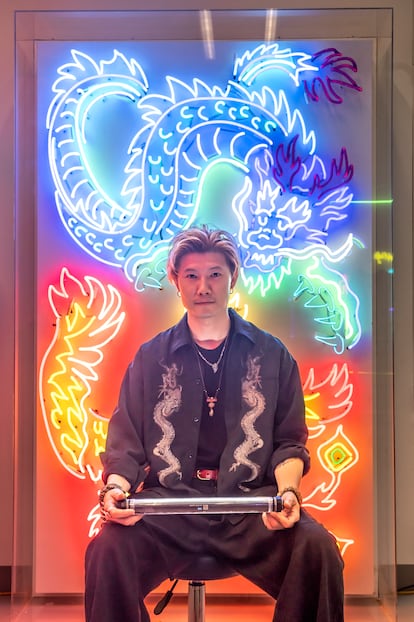
Jive Lau speaks softly, with a soft tone. His 41 years contrast with his youthful appearance. He dresses in black, a T-shirt and wide pants with two large front pockets, a color that makes his dyed blonde hair stand out. Around her neck she wears several pendants, bracelets on her wrists, and rings on her fingers. The studio is clean and tidy. There are several work tables and chairs, also a small library with design and neon books. On the walls hang some of his neons—a panda bear, a dragon facing off with an eagle—and the tools he works with. He is also open to receiving orders from clients who know him by word of mouth and by his use of social networks, where he posts videos and photos of his work and final work. Jive’s studio sounds like a compressor when it turns on a narrow, long device from which a bluish flame appears shortly after. When it reaches about a thousand degrees Celsius, take a glass tube. At the same time as it puts it in contact with said flame, air is blown through its mouth through a rubber band attached to the other end of the glass tube, into which gas (neon, argon, helium, carbon dioxide) has also been injected. carbon, mercury). And so, with fire and air, as well as with precision and delicacy, he shapes a glass tube that with heat becomes a flexible body. It is an art that requires knowledge of chemistry and engineering.
While doing this demonstration, he says that he learned the art of neon in Taiwan, an island country where teachers are more open to sharing their knowledge. Jive Lau also uses Internet tutorials. He is aware that neon has an expiration date, but also that it is a hallmark of Hong Kong that he would like to keep alive in some way. Creating handmade pieces that shine on the street, rather than in showrooms, is their goal. Neons under which dates, fleeting frictions and the collision of two people looking in opposite directions continue to take place. Neons are history and witnesses of others. Even off.
travel notebook
Walking is the best way to get to those streets where there are the few neon signs that continue to hang from the facades of the buildings and illuminate streets such as Nathan Road, Portland and Shanghai Street, all three on the Hong Kong Peninsula, and Lockhart Street and Johnston Road, in Wan Chai (Hong Kong Island), very close to the Aki MGallery, a luxurious and minimalist Japanese-inspired hotel. Finding where to eat is not difficult, there are restaurants everywhere, it is a matter of choosing.
Tetra Neon Exchange is a group dedicated to the conservation of disused signs and organizes tours to see some of the historic neon signs that survive in Hong Kong. Another similar project is The Hong Kong Neon Heritage, which seeks to raise awareness about its disappearance.
To understand this city state and know a little more about its neons, it is advisable to read:
- The chronicleby Martín Caparrós and published by Círculo de Tiza.
- Hong Kong Daysby Xavier Moret and published by Altaïr.
- Hong Kong neon, by Swiss photographer Pascal Greco.
And watch the movies:
- The Chinese Boxdirected by Wayne Wang and starring Gong Li and Jeremy Irons.
- A Light Never Goes Outby Hong Kong filmmaker Anastasia Tsang, about a family that must cope with the death of a neon sign maker.